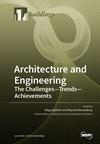FA/GGBS 混合水泥体系中的二氧化碳捕获评估:从水泥浆到商业产品
IF 3.1
3区 工程技术
Q2 CONSTRUCTION & BUILDING TECHNOLOGY
引用次数: 0
摘要
水泥行业错综复杂的生产工艺(包括窑炉加热和化石燃料的使用)造成的二氧化碳排放量占全球总量的 5-8%,是建筑业的重要碳排放源。本研究通过利用酚酞法和热重法来量化混合水泥系统中的二氧化碳捕集潜力。其主要目的是评估这些混合体系浆料的二氧化碳吸收能力。初步评估包括计算水泥浆中的碳捕获能力,随后扩展到估算最终混凝土产品中的二氧化碳含量。研究结果表明,掺入磨细高炉矿渣(GGBS)或基于乙曲石的膨胀剂,无论其细度如何,都不会显著提高碳化深度。相反,粉煤灰(FA)的引入则显著提高了碳化深度,使捕获的二氧化碳含量大幅提高了 36.4%。观察到的碳化行为差异主要源于孔隙结构的不同,这可归因于 GGBS 和 FA 之间不同的水化特性。热分析证实了二氧化碳在 FA 混合物中的稳定性提高,突出了材料成分对碳化和减排的重要影响。同时掺入 GGBS 和 FA 可显著减少粘结剂的排放量,几乎占 PC 混凝土排放量的一半。最初,60% 的 GGBS 比 50% 的 FA 排放量低,但当考虑到二氧化碳捕获时,这种排放动态发生了显著变化,强调了添加剂对排放模式的复杂影响。这凸显了评估水泥基系统中碳化引起的排放的复杂性。本文章由计算机程序翻译,如有差异,请以英文原文为准。
Assessment of CO2 Capture in FA/GGBS-Blended Cement Systems: From Cement Paste to Commercial Products
The cement industry’s intricate production process, including kiln heating and fossil fuel use, contributes 5–8% of global CO2 emissions, marking it as a significant carbon emitter in construction. This study focuses on quantifying CO2 capture potential in blended cement systems through the utilisation of phenolphthalein and thermalgravimetric methodologies. Its primary objective is to assess the CO2 absorption capacity of these blended systems’ pastes. Initial evaluation involves calculating the carbon capture capacity within the paste, subsequently extended to estimate CO2 content in the resultant concrete products. The findings indicate that incorporating ground granulated blast-furnace slag (GGBS) or an ettringite-based expansive agent did not notably elevate carbonation depth, irrespective of their fineness. Conversely, the introduction of fly ash (FA) notably augmented the carbonation depth, leading to a substantial 36.4% rise in captured CO2 content. The observed distinctions in carbonation behaviour primarily stem from variances in pore structure, attributable to distinct hydration characteristics between GGBS and FA. Thermal analysis confirms the increased stabilisation of CO2 in FA blends, highlighting the crucial influence of material composition on carbonation and emission reduction. Incorporating both GGBS and FA notably diminishes binder emissions, constituting almost half of PC-concrete emissions. Initially, 60% GGBS shows lower emissions than 50% FA, but when considering CO2 capture, this emission dynamic significantly changes, emphasising the intricate influence of additives on emission patterns. This underscores the complexity of evaluating carbonation-induced emissions in cementitious systems.
求助全文
通过发布文献求助,成功后即可免费获取论文全文。
去求助
来源期刊

Buildings
Multiple-
CiteScore
3.40
自引率
26.30%
发文量
1883
审稿时长
11 weeks
期刊介绍:
BUILDINGS content is primarily staff-written and submitted information is evaluated by the editors for its value to the audience. Such information may be used in articles with appropriate attribution to the source. The editorial staff considers information on the following topics: -Issues directed at building owners and facility managers in North America -Issues relevant to existing buildings, including retrofits, maintenance and modernization -Solution-based content, such as tips and tricks -New construction but only with an eye to issues involving maintenance and operation We generally do not review the following topics because these are not relevant to our readers: -Information on the residential market with the exception of multifamily buildings -International news unrelated to the North American market -Real estate market updates or construction updates
 求助内容:
求助内容: 应助结果提醒方式:
应助结果提醒方式:


